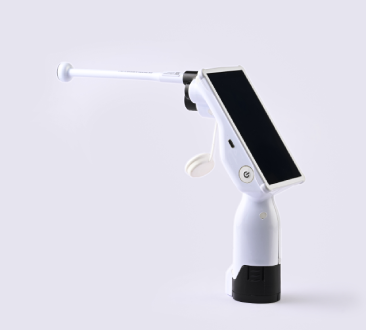Liger’s Thermoblative Technology Wins Over Cryotherapy
CRYOTHERAPY
THERMOBLATIVE






Cost per use less than 100 INR; No consumables required
Smaller procedure time; 20-40 seconds per treatment cycle
Suitable for mobile use & field clinics -small & battery operated
Overcomes supply chain challenges plaguing Cryotherapy – operable in areas without electricity & with inexpensive consumables
Increased access thereby improving health equity in rural & remote areas
Endorsed by WHO in 2019 for treating precancerous cervical lesions with proven clinical outcomes
Initial setup cost of ~ ₹1.5 Lakhs; Requires continuous supply of refrigerant gas cylinders
One cycle of treatment takes 11 minutes
Limited to static facilities due to the need for gas cylinders and additional infrastructure
Requires a cold chain supply for gas cylinders, complicating logistics and increasing costs
Limited access; primarily available in centralized facilities
Established & proven method
Questions and Answers
A. Literature studies have validated that the outcome clinical efficacy is as good or better with thermocoagulation™ as compared to freezing. Refer to Duncan’s studies as shown in Dolman’s meta-analysis in the website educational section. The Liger Medical thermocoagulator™ uses the latest state-of-the-art technology to reach and maintain the treatment tip accurately at temperature within 0.2°C.
A. They are the same, cold coagulation is a misnomer as it uses heat to cause tissue destruction.
A. The time of 20 seconds and 100°C is the standard used by Duncan in his original work (see references). The treatment time is shown by each blue LED turning off as ¼ of the time is up, and also an audio sound given). When all blue LED’s are off the treatment cycle is completed.
A. Standard treatment of 20 seconds at 100°C has been tested on 50 applications before the low battery charge comes on. On body temperature cervical tissue, more cycles could be experienced. If more than one site on the same patient’s cervix is performed, this needs to be taken into account. When the low battery LED indicator comes on, there still is sufficient energy left in the battery to finish that treatment.
Cleaning and disinfection of the Probe for the HTU-110 Thermocoagulator
The full high-level sterilization is given in the IFU that was sent with each unit on page 5 column 2. Many users follow the method below for cleaning and Hi-level disinfection of the probes.
- Place the silicon cap firmly over the connector end.
- Clean any debrie off the probe with mild detergent and water using a soft cloth or soft brush, then rinse in clean water.
- Place the probes upright in a cup (approximately 5- 6” deep) of ~2.5% gluteraldeyde (Cydex) for 20-60 minutes (some sites use a 0.5% Chlorine solution-Chlorox).
- This allows the connector end not to be immersed in solution which is not necessary as the connecter end is not inserted into the patient nor contacts the patient and need not be sterilized.
- Some users apply a heat cycle of the device to assure that the heated end has reached a sterilization temperature but this is unnecessary and regulatory agencies have not approved this procedure for sterilization. It certainly does sterilize the tip as all viral proteins are denatured above 60’C.
- Rinse the probe end (not the connector end with the silicone cap) with clean, non-contaminated water, thoroughly dry the probe in air.
- Wrap in clean material to keep it from being contaminated before next use.
- The handle can, if needed, be wiped clean with a cloth dampen with a small amount of alcohol.
A. No, they are identical, the protective boot on the base of the battery can be moved to either battery. The batteries can be recharged in a couple of hours.
A. Studies in Chicken breast show a depth just over 5 mm. Duncan’s studies showed this setting was adequate and the overlapping treatment to cover the total lesions was good.
Yes, see the the attached document.
Yes, see the the attached document.
Yes, see the the attached document.
A. The thermocoagulator™ is quicker, easier and simpler to use. The thermocoagulator™ procedure is approximately 20 seconds per treatment as compared to cryotherapy which requires 11 minutes per treatment. The thermocoagulator™ has easy to use rechargeable batteries that use minimal energy, whereas cryogenic requires costly replacement gas cylinders.
Yes, see the the attached document.
A. Yes, see attachment.
A. Yes, see attachment.






